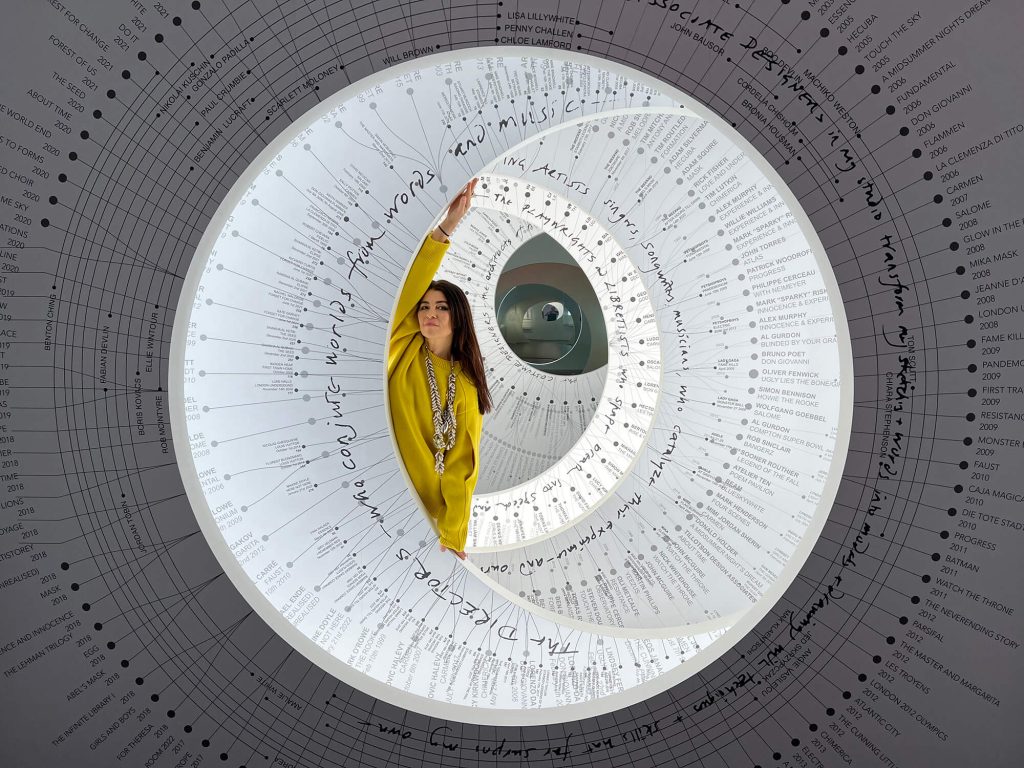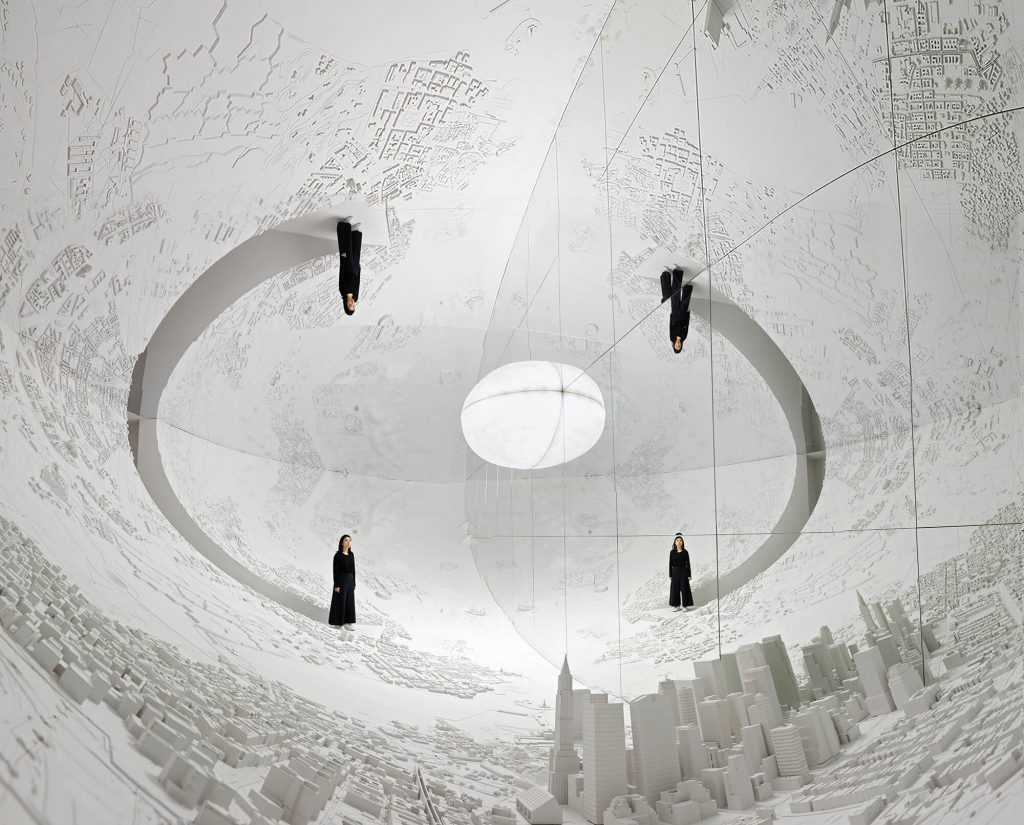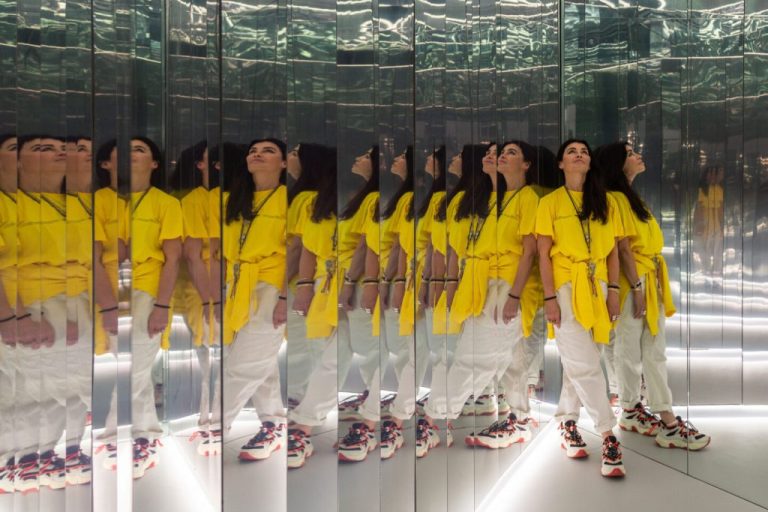Few artists have the capacity to consistently shape the world’s cultural landscape with such frequency and impact as Es Devlin. Renowned for her monumental choral installations and mirrored mazes at Tate Modern and Superblue Miami, as well as collaborations with Beyoncé, U2, and The Weeknd, and stage designs for esteemed fashion houses like YSL, Dior, and Louis Vuitton, her influence extends far beyond the confines of the stage and catwalk. Devlin’s immersive installations at the major art institutions including the Lincoln Centre, V&A and Serpentine, and global events like the Olympics and the Super Bowl showcase her ability to captivate the imagination of millions. Across all scales and forms, her work is transformative.
A retrospective of Devlin’s work recently opened at the Cooper Hewitt Smithsonian Museum of Design in New York. Showcasing 30 years of work, An Atlas of Es Devlin provides a comprehensive overview of her practice whilst also acting as an immersive art installation. The exhibition, on view through August 11, 2024, along with Thames&Hudson’s sculptural 900 page publication, highlights her talent for cross-disciplinary work, her ability to create immersive environments, and her skill in reshaping cultural experiences.
Uncover Es Devlin’s thoughts on the power of daily practice, her architectural vision, and her creative fusion of art, architecture, and technology in our interview.
hube: Given the focus on nature in your work, what do you consider most important in the struggle to maintain balance between nature and humanity?
Es Devlin: Read, learn, and practise.
For me, it’s important to read as much and as widely as possible. I seek authors and poets that help me to understand the roots of the structures and systems—economic, civic, and cultural—that have led to our current state of separation from one another and from the rest of the biosphere. I read writers who guide me towards practical ways of reconnecting with one another and with other species and the planet.
The authors who have guided me include Joanna Macy, David Abram, Timothy Morton, Reni Eddo-Lodge, Elizabeth Kolbert, Naomi Klein, Amitav Ghosh, Emma Dabiri, Simon Barnes, Arundhati Roy, Jason Hickel, and Yanis Varoufakis, among many others. They help me to understand that our current systems are relatively recent. They encourage and console me that our current civic structures will evolve if we act collectively to change them.
Daily, hourly practice. When I was learning the violin as a child, I practised every day.
I try now to practise re-connection, with other people, with other species, with the planet and beyond, to practise un-separation between me and the rest of the biosphere, the way I might practise daily scales on a violin, to connect my fingers with the bow, the resonating wooden chamber, in order to make music.
I try daily to practise seeing the patterns that are continuous between the structures within my body and the natural structures that surround me. I try to learn the names of the animals and plants that I encounter. Every time we learn the name of a more than human species we make a habitat for it within our imagination.
Every time I find myself in a situation that situates me within a hierarchy, I try to take actions, however small, that soften the border between myself and others. I try to retrieve the fundamental human connection from within the illusory construct of human separation.
h: When creating worlds and spaces, you often use architectural imagery. If you were to select your own architectural project, would you choose to design a museum, a church, or a theatre?
ED: I would aim to fuse the architecture of church, theatre, and art museum. I think we go to each of these places to experience phenomena that are larger than ourselves and to become part of a temporary community, a rehearsal society. A public choral sculpture that I made in 2022 outside Tate Modern, Come Home Again, drew its form and Evensong ritual format from St. Paul’s Cathedral across the river, while inviting in audiences that were there to experience the art inside the Tate. It was a fusion of art and ritual.

Courtesy of ES DEVLIN

Memory Palace, 2019
Courtesy of ES DEVLIN, photography by PETER MALLET

